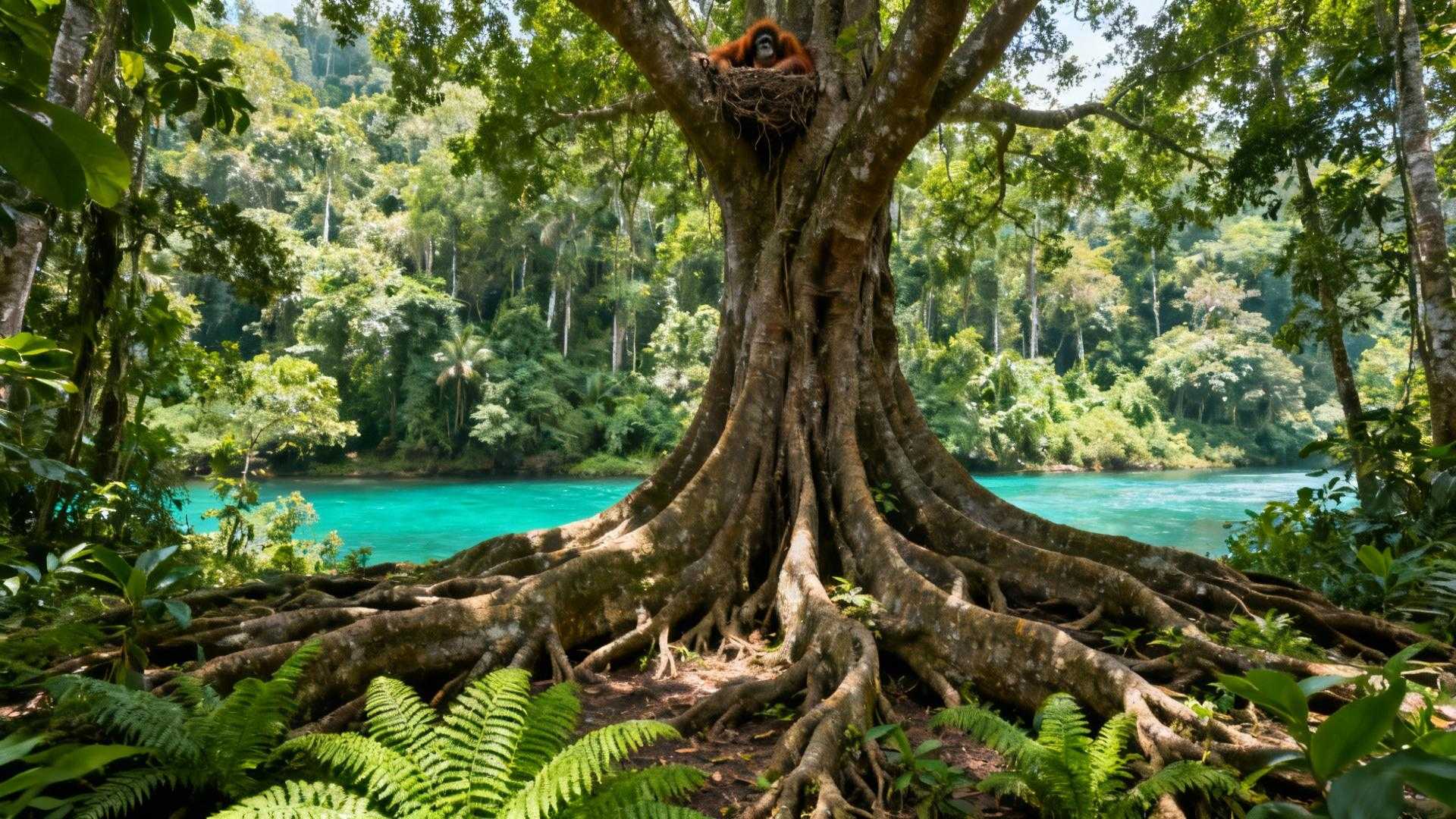Dawn breaks over Danum Valley’s canopy—no alarm clocks, just prehistoric hornbill calls echoing through mist that’s risen for 130 million years. I’d spent two decades photographing “pristine” rainforests from Costa Rica to Congo. Yet nothing prepared me for walking through Earth’s oldest tropical ecosystem with only 180 other souls permitted entry that week.
This isn’t eco-tourism theater where guides guarantee orangutan selfies. It’s what happens when conservation actually works—when profit takes second place to preservation. Travelers must earn their encounters with clouded leopards and Bornean orangutans through patience, reverence, and a bone-jarring 2-hour drive on logging roads that filter out Instagram crowds.
The Journey That Changes Everything
Arriving in Lahad Datu after 20-plus hours of flights feels like reaching the edge of civilization. The 82-kilometer drive through palm plantations and secondary forest builds anticipation with every pothole. Then Danum Valley’s primary dipterocarp forest appears like entering cathedral darkness.
No casual day-trippers here—visitor numbers stay restricted to protect what InsideAsia Tours calls “true wilderness.” The bumpy logging road serves as nature’s velvet rope. Only those willing to surrender comfort reach this 130-million-year-old sanctuary where dinosaurs once roamed.
Helen, our exceptional guide with encyclopedic knowledge of flora and fauna, explains the indigenous customs that shaped this valley’s protection. “This forest has never been settled, logged, hunted, or interfered with by humans,” she says, her voice carrying the weight of that miracle.
What 130 Million Years Actually Looks Like
Walking beneath trees that predate the Amazon by 75 million years creates instant humility. The biodiversity here makes other “rainforests” seem like botanical gardens. Danum Valley hosts 317 bird species—representing nearly three-quarters of Borneo’s resident birds.
Architecture Written in Bark and Buttresses
Dipterocarp giants tower overhead with buttress roots spanning 6 meters wide. Vines thick as human torsos spiral toward the canopy. The layered forest reaches peaks of 1,093 meters, creating microclimates that shelter 121 mammal species including 10 primate varieties.
The Living Museum No One Curates
Flora records show 511 tree species identified so far—each playing roles in ecological balance unchanged since the Cretaceous period. This habitat that’s “changed little since dinosaurs roamed the Earth” supports the highest concentration of orangutans anywhere in the world. No zoo could replicate such evolutionary perfection.
Encounters That Reset Your Definition of Wild
Concrete experiences here separate Danum Valley from zoo-like eco-lodges elsewhere. Recent conservation staff documented a rare clouded leopard sighting—proof that apex predators still claim these territories. Guest reviews consistently describe feeling “privileged” to witness such untouched wilderness.
The Night Safari No One Photographs
Guided darkness treks reveal nocturnal secrets as orangutans bed down in nests 30 meters overhead. Flying squirrels glide between ancient trees while civets hunt below. Flash photography stays prohibited—protection trumps social media every time. As one Boston visitor noted in May 2025: “Wild sightings are a gift, not a guarantee.”
Canopy Walks and Forest Meals
The 300-meter canopy walkway stretches 27 meters high, offering close-up rainforest observation at dawn when bird activity peaks. Swimming in turquoise Segama River tributaries provides relief between treks. This controlled-access approach mirrors the Philippines’ underground river protection, where visitor caps preserve pristine ecosystems.
The Transformation You Don’t Expect
Limited mobile connectivity forces present-moment awareness impossible in hyper-connected destinations. Mandatory conservation briefings shift perspectives from entertainment to education. Witnessing multinational research teams studying climate impacts changes how you view both nature and tourism responsibility.
The $250-400 nightly investment contrasts sharply with Cancún’s $180 resort waste. Here, luxury means authentic wilderness encounters rather than artificial amenities. Travelers discover that preservation requires exclusivity—and exclusivity demands commitment.
Your Questions About Hiking Borneo’s Ancient Rainforest Answered
How Do I Actually Reach Danum Valley From the US?
Fly 20-22 hours from major US cities to Kota Kinabalu via 1-2 stops ($1,500-2,300). Take domestic flights or drive to Lahad Datu, then arrange lodge transport for the 82-kilometer journey. Book April-October during dry season when trail conditions optimize wildlife viewing opportunities.
What Makes This Different From Amazon Rainforest Tours?
Age comparison reveals the distinction: 130 million years versus the Amazon’s 55 million. Annual visitor caps of 5,000-10,000 contrast with millions elsewhere. Like Fiji’s protected villages, Danum Valley maintains zero historical human settlement, creating hunting-free sanctuary zones.
Is the $250-400 Per Night Cost Justified?
Pricing includes guided treks, night safaris, research center access, and direct conservation funding. Unlike tourist trap destinations, every dollar supports habitat protection rather than profit maximization. Royal guests including Will and Kate validate the luxury wilderness experience.
On my final morning, a Bornean orangutan mother teaches her infant to crack termite mounds 20 meters overhead—a scene unchanged for 130 million years. Canopy mist rises. Hornbills call. And I understand what travelers mean when certain places don’t just change your itinerary—they change what you’re willing to protect.
